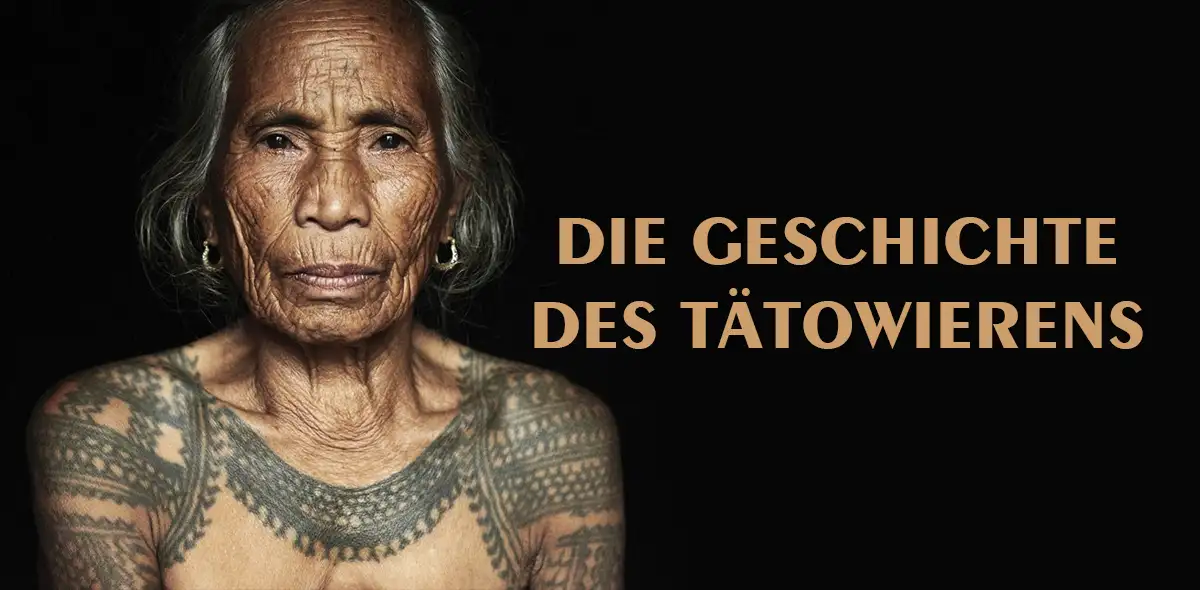The history of tattooing in Formentera

History of tattooing
The history of tattooing goes back thousands of years and can be found in different cultures and societies around the world. Here is a summary of the most important events and developments in the history of tattooing. Experience tattoo art at its best in the Tattoo Formentera Lounge. Your new tattoo starts here.
The art of tattooing has a fascinating history that stretches back thousands of years. A permanent work of art on the skin, a tattoo is an expression of a person’s personality, culture and individuality. The origins of tattooing can be found in various cultures around the world, and each has its own unique approach and meaning.
Where did the first tattoos come from?
The earliest recorded tattoos come from Egypt and were discovered on mummies that are several millennia old. These tattoos often had religious and ritualistic meanings. Similarly, tattooing was also practised in many other ancient cultures, such as Greece, Rome and China. On our home page, Tattoo Studio Formentera, you can see an overview of our services, as well as those of Piercing Studio Formentera.
The meaning of tattoos
In Polynesia, tattooing had a special meaning and was deeply rooted in the culture. There, tattoos were worn not only for aesthetic reasons, but also had a social and spiritual significance. They were used as a sign of rank, tribal affiliation or individual history.
Over time, tattooing spread across the continents and found its place in different cultures. In the 18th century, tattoos became popular among seafarers who wanted to capture their travels and adventures with elaborate designs on their skin. This contributed to the popularisation of tattoos and paved the way for their current acceptance and popularity.
In the 20th century, tattoos experienced an upsurge in Western culture. Worn not only by seafarers but also by artists, actors and musicians, they gradually found their place in mainstream society. With the development of the tattoo machine, tattooing became faster, more precise and less painful, which contributed to further popularisation.
Nowadays, tattoos have become a form of self-expression art.
People choose to get tattoos to represent their personality, interests, beliefs or important life events. Tattoos are an expression of individual creativity and allow people to show their unique identity on a very personal level.
Tattoos are characterised by a wide variety of styles
Modern tattooing is characterised by a wide variety of styles, techniques and motifs. From traditional tattoos to realistic portraits, abstract designs and geometric patterns, there are no limits to the artistic freedom of tattooing. With qualified tattoo artists, safe hygienic standards and a wide range of colours and tools, tattooing has become a recognised and respected art form. Overall, tattooing is a timeless testament to human creativity, cultural diversity and individual expression. It remains a fascinating phenomenon that has inspired people all over the world for thousands of years.
Early days: The origins of tattooing can be traced back to the early days of humanity. Archaeological finds show that tattoos were already being practised in various cultures over 5,000 years ago. For example, mummies with tattooed skin have been discovered in Egypt.
Antiquity: In ancient times, tattooing played an important role in various cultures. In ancient Greece, tattoos were often used to mark slaves. In ancient Rome, tattoos were mainly used on criminals to mark them.
Pacific Islands: The culture of tattooing flourished in the Pacific Islands such as Polynesia, New Zealand and Hawaii. There, tattoos had a deep-rooted symbolic meaning and were often used to depict social status, membership of a particular group or to depict tribal histories.
Asia: Many Asian cultures also practised tattooing. In Japan, the art form of Irezumi developed, in which elaborate full-body tattoos were created using special traditional techniques. In India, tattoos were used for religious reasons to show affiliation with certain faiths.
Europe: In the Western world, tattooing was largely forgotten during the Middle Ages and early modern times. However, in the 18th century, tattoos became popular again, especially among seafarers. Tattoos often served as a means of identification for sailors and were also seen as a lucky charm.
Modern times: In the 19th and 20th centuries, tattoos continued to grow in popularity in the Western world. In the United States in particular, tattoo culture was shaped by the influence of immigrants and travelling circuses. In recent decades, tattoos have experienced a huge boom and have become a widespread form of body art.
Technological developments: With the advancement of technology and the development of tattoo machines in the late 19th and early 20th centuries, it became easier and faster to create tattoos. Nowadays, there is a wide variety of techniques, styles and colours used in tattooing.
Meaning and symbolism: Tattoos can have a variety of meanings and often serve as an expression of personality, affiliation to a group or a particular philosophy of life. Each motif or symbol can have an individual meaning that is determined by the person wearing it. It is important to note that the history of tattooing is very diverse and complex, having been shaped by many different cultures and traditions. This summary only provides an overview of the most important aspects and developments.

